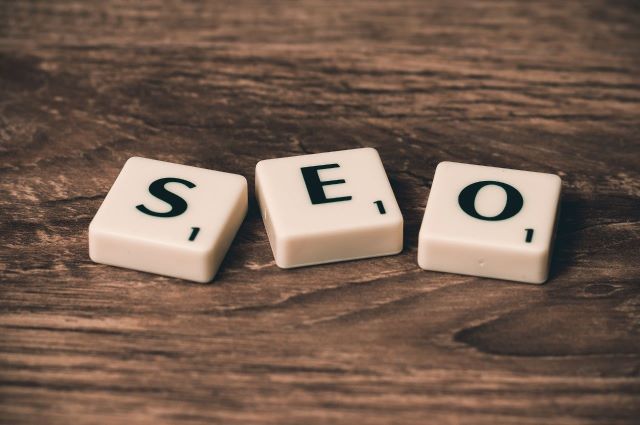One of the most crucial methods for drawing traffic to your website using Shopify is SEO.
We’ll outline the steps you need to take in this article to guarantee a steady increase in organic traffic from Google and other search engines. Owners of Shopify stores will find the post valuable because it will teach them how to improve traffic to their stores.
Create new category and subcategory pages, and include products that are appropriate on the website. In 99% of situations, these recommendations will be helpful. They can be used in nearly every specialty.
1. Include as many categories and subcategories as possible.
Your SEO specialists may have suggested that you increase the number of target sites and categories while the semantic core was being developed. Gather search terms for the site’s category pages, then research which terms can be used to construct new pages. Any product group can be broken down into a number of subcategories.
Of course, only when there is a need for it is it required to break the category down into subcategories. People might search for “scooters for babies & toddlers” or “buy a city scooter” or something similar. When building a semantic core site, your SEO optimizer should consider all available methods for increasing the site’s number of subcategories. The website can cover more search terms the more target pages that are built. Additionally, a website will receive more traffic and orders the more Google search queries that point to it.
Publish new products on the website or dissect an existing product into various parts. You must frequently add new products to broaden the selection if you want to increase visitors. When there is nothing further to add to the website after you have added all the products, do as follows: divide one product into numerous. However, not every situation calls for such a tactic.
2. For every category and subcategory page, add or enhance pertinent SEO language.
In order to reduce the amount of SEO text needed for these pages, it might not be the best idea to divide the site into a number of subcategories. As you are aware, the semantic core’s keywords will only function if:
- In the SEO text, they are on the target page.
- They are mentioned in the meta description and title tag.
Therefore, SEO texts of the size that allow us to utilise all the phrases from the group of searches should be placed on each page of the category and subcategory of the website. In that case, your website would receive visitors from 100% of search searches.
Writing a distinctive technical description is undoubtedly challenging, but fortunately, you don’t have to. You can create own product descriptions that give a general overview of the item:
- Advantages.
- why using the product is preferable.
- whenever the guest is not required to use it.
- Stories regarding the product are fascinating.
- information or interesting tidbits regarding the product.
- Advice to persuade customers to purchase it.
The text should generally inform and benefit the reader. A excellent text should also induce relaxation, lift the reader’s spirits, and provide pertinent information that is not readily available elsewhere. It will be able to keep the person on the page longer in this scenario. The advantages listed below are what you receive from a copy with a distinctive product description:
- The product page will have a better Google ranking.
- This product’s behavioural aspects will be improved.
- The conversion rate will rise if the text is informative.
- Does not require payment for backlinks. You have the option of obtaining free backlinks; if the text is instructive, readers may begin to share a link to the product.
- More Google search terms will be effective.

3. Increasing the number of links pointing to the website’s home page constantly
To build the link profile of the site, it is essential to continuously increase the number of links pointing to it. Links to the website’s home page must be kept up to date. In this approach, the domain will gain links that will be equally dispersed throughout all of the site’s categories and subcategories. The effect in the form of a steady increase in site traffic will happen faster the more links are placed on the site’s home page.
However, keep in mind that in order to prevent getting penalised, your connections profile must be developed gradually.
However, keep in mind that in order to avoid slipping through the filters, it is essential to build your links profile gradually. You can start making adjustments to your Shopify store based on our advice. By successfully selling your products, this will assist you in growing your firm.
The site’s links are used to direct search robots. A search robot uses fewer resources and can explore a resource more quickly the simpler the site’s structure. This directly results in the site being indexed more quickly. Furthermore, properly and logically positioned documents on the website can reach the search engine’s index the following day. In conclusion, the structure has a direct impact on ranking because a better structure will result in a faster indexing process. This is a crucial component of SEO promotion.
Remember to account for the weighted distribution of internal connections among pages. Search engines may consider pages without internal weight to be of low quality and authority, which could result in these pages being badly indexed and ranked. In addition, more emphasis should be placed on the most crucial pages. An appropriately structured website distributes the weight of internal connections to all pages based on their significance to users and for promotion. So, it also has an impact on ranking.
The user’s opinion of a website and the search engine are directly connected. That much is clear: search engines are more interested in resources that are appealing to users. Google’s algorithms will interpret a website’s resource as being of low quality if they find that visitors only stay on the site for a little length of time. This is extremely detrimental to the website’s promotion and search engine results.
The search algorithm is likely to detect it and give your site a higher rating in the form of an improvement in the search output if the user spends time on the site and increases the likelihood that they will make an order.
The user is focused on your site’s primary actions when the structure is appropriate. It takes the complexity out of finding the right page for someone. Otherwise, it will permanently lower the conversion rate because the user might not find what they are seeking for and won’t make a purchase.
4: Use keywords in all areas of your website
After selecting your keywords, use them all throughout your website. You can utilise them all throughout your website’s content, including the headers, meta descriptions, and title.
The words and phrases people use to search for information on the internet are known as keywords. By incorporating keywords throughout your website, you increase the likelihood that users searching for those terms will find your website. This might assist you in increasing the number of visitors to your website and raising its position in search engine results pages (SERPs).
The placement of keywords on your website may be done in a few different ways. Utilising them in the title tag of your website is one method. The text that displays in the SERP next to the URL of your website is known as the title tag. Make sure your title tag is descriptive and contains the keywords you want to rank for.
Utilising keywords in the meta descriptions of your website is another approach to incorporate them throughout the entire website. The brief text summaries that follow your website’s title tag on search engine results pages (SERPs) are known as meta descriptions. Your goal keywords should be included in the meta description, which should also be convincing and educational.
Additionally, you can incorporate keywords into the text on your website. Try to naturally and frequently incorporate your target keywords into the text of your website. Keyword stuffing, on the other hand, is the practise of utilising keywords excessively in an effort to manipulate search engine rankings.
Conclusion
As we’ve demonstrated, there are several practical strategies to boost organic traffic to your Shopify website. Whatever goods or services you offer, you will undoubtedly attract new customers. The user-friendly segmentation into categories, SEO texts, and the building of a link profile can all significantly increase traffic to your online store. There are many things that can be done, as would be expected, to greatly improve traffic, but we have already covered the most effective ones. You will receive more organic traffic than ever before if you follow our straightforward but practical guidelines.
Please get in touch with us to start discussing your needs if you’d want to learn how WizeSaaS can assist your company with Shopify SEO. Email us at info@wizesaas.com for additional details.

